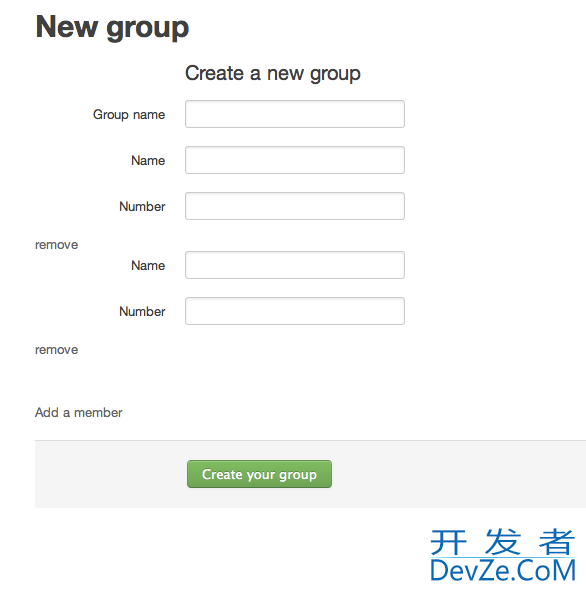When using a content provider for SQLite database access
- Is it better practice to have a content provider for each table or to use one for all tables?
- How to handle one-to-many relationships 开发者_高级运维when creating new records?
A ContentProvider is not a database
A ContentProvider is a way to publicly (or semi-publicly) access data as content. This may be done in a number of ways, via file access, SQLite or even web access. A ContentProvider in and of itself is not a database, but you can program a database for it. You may also have multiple ContentProviders accessing the same database, but distributing different levels of access, or the same content in different ways according to the requestor.
What you are really asking is not a ContentProvider question, but a database question "How to handle relationships in an SQLite database" because the ContentProvider doesn't use any database code unless you tell it to via an SQLiteOpenHelper and other similar classes. So, you simply have to program your database access correctly and your SQLite database will work as desired.
A database is a database
In the old days, databases were simply flat files where each table was often its own entity to allow for growth. Now, with DBMS, there is very little reason to ever do that. SQLite is just like any other database platform in this regard and can house as many tables as you have space to hold them.
SQLite
There are certain features that SQLite handles well, some that it handles - but not well, and some that it does not handle at all. Relationships are one of those things that were left out of some versions of Android's SQLite, because it shipped without foreign key support. This was a highly requested feature and it was added in SQLite 3.6.22 which didn't ship until Android 2.2. There are still many reported bugs with it, however, in its earliest incarnations.
Android pre 2.2
Thankfully being SQL compliant and a simple DBMS (not RDBMS at this time), there are some easy ways to work around this, after all, a foreign key is just a field in another table.
- You can enforce database
INSERTandUPDATEstatements by creatingCONSTRAINTs when you use yourCREATE TABLEstatement. - You can query the other table for the appropriate
_idto get your foreign key. - You can query your source table with any appropriate
SELECTstatement using anINNER JOIN, thus enforcing a pseudo-relationship.
Since Android's version of SQLite does not enforce relationships directly, if you wanted to CASCADE ON DELETE you would have to do it manually. But this can be done via another simple SQL statement. I have essentially written my own library to enforce these kinds of relationships, as it all must be done manually. I must say, however, the efficiency of SQLite and SQL as a whole makes this very quick and easy.
In essence, the process for any enforced relationship goes as follows:
- In a query that requires a foreign key, use a
JOIN. - In an
INSERTuse aCONSTRAINTon the foreign key field ofNOT NULL - In an
UPDATEon the primary key field that is a foreign key in anotherTABLE, run a secondUPDATEon the relatedTABLEthat has the foreign key. (CASCADE UPDATE) - For a
DELETEwith the same parameters, do anotherDELETEwith the where beingforeign_key = _id(make sure you get the_idbefore youDELETEthe row, first).
Android 2.2+
Foreign keys is supported, but is off by default. First you have to turn them on:
db.execSQL("PRAGMA foreign_keys=ON;");
Next you have to create the relationship TRIGGER. This is done when you create the TABLE, rather than a separate TRIGGER statement. See below:
// Added at the end of CREATE TABLE statement in the MANY table
FOREIGN KEY(foreign_key_name) REFERENCES one_table_name(primary_key_name)
For further information on SQLite and its capabilities, check out SQLite official site. This is important as you don't have all of the JOINs that you do in other RDBMS. For specific information on the SQLite classes in Android, read the documentation.
As for first question: you don't need to create content provider for every table. You can use in with multiple tables, but the complexity of provider increased with each table.
A Content Provider is roughly equivalent to the concept of a database. You'd have multiple tables in a database, so having multiple tables in your content provider makes perfect sense.
One to many relationships can be handled just like in any other database. Use references and foreign keys like you would with any other database. You can use things like CASCADE ON DELETE to make sure records are deleted when the records they reference in other tables are also deleted.




![Interactive visualization of a graph in python [closed]](https://www.devze.com/res/2023/04-10/09/92d32fe8c0d22fb96bd6f6e8b7d1f457.gif)



 加载中,请稍侯......
加载中,请稍侯......
精彩评论